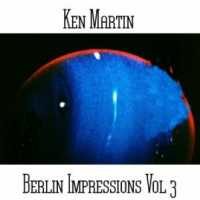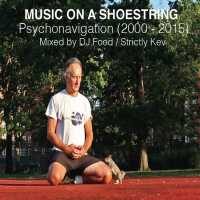Description
- Stroll Along The Paths On A Chip [5:59]
![MP3 soundclip of Stroll along the paths [0:29]](/wp-content/uploads/2022/11/m3u.gif)
- Neuronal Disorders Inside A Silicon Brain [13:35]
- The Race Towards A Knowledge [4:04]
![MP3 soundclip of Race towards a knowledge [0:29]](/wp-content/uploads/2022/11/m3u.gif)
- The 20th Century Dark Echoes [9:48]
- Short Message To Tomorrow [3:37]
![MP3 soundclip of Short message to tomorrow [0:29]](/wp-content/uploads/2022/11/m3u.gif)
- Giant Leap For Mankind [23:45]
- Floating Over Mare Tranquillitatis
- Extraterrestial Sensei
- Home Again [7:40]
![MP3 soundclip of Home again [0:29]](/wp-content/uploads/2022/11/m3u.gif)
Tale-ambience a la Kitaro, sequential electronica and eclectic sounds





Sylvain Lupari / Guts of Darkness –
Its a bit difficult to tame Przemyslaw Rudzs musical universe. A sound world full of paradoxes where the Polish composer and synthesist is delighting in introducing there a multitude of tones as eclectic as electronic on musical structures in constants permutations, and this no matter their lengths of time, in soft atmospheres sometimes cosmic, oniric, morphic and intensely rhythmic. Self-Replicating Intelligent Spawn is the last part of a trilogy begun in the end of 1999 with Summa Technologiae. A trilogy taking pattern as each of the first 2 albums was released and which tells the story of mankind during 21st century. A 21st century EM tale and a surprising album where, as its icon Jean Michel Jarre, Przemyslaw Rudz destabilizes his listeners with an astonishing variance of styles.
Stroll Along the Paths on a Chip opens Self-Replicating Intelligent Spawn with tablas and congas percussions, adorned with some hissing cymbals. Piano notes add a night club melodious dimension with a zest of lounge tendency. A line of bass is detaching and waves with strength, surrounding itself with heavy felted pulsations and interrupting this suave jazzy intro, plunging Stroll Along the Paths on a Chip into a more electronic atmosphere. Keyboards and sequences keys sparkle and skip, molding a stormy and nervous pace which jumps up with good percussions whereas that a synth with brief melodious breezes and twisted solos assumes the melodious portion.
Stroll Along the Paths on a Chip hooks instantly the hearing, quite as the very nervous and livened up The Race Towards a Knowledge with its hybrid solos and its roaring rhythm as well as the technod and heavy Short Message to Tomorrow which would peel off a dance floor while bringing us to dreamlike territories with its romantic refrain and symphonic synths. Short tracks which are interlacing between more audacious ones as Neuronal Disorders Inside a Silicon Brain, a track that wears well its naming with its hyper syncretic intro which scratches cerebral cells. Enormous caustic synth strata tear linens of a cosmic oblivion to stimulate nerve-cells of a latent schizophrenia. They roar with their metallic magnetisms between the pure stillness and a disparate melodious movement which tries to pierce this heterogeneous wall. Behind these syncretic sound panels with heavy reverberations, we perceive a dramatic effect being drawing. A tempo takes slowly shape at around the 6th minute with a fine sequence with subdivided chords. Chords which are subdividing beneath a sky stuffed of intriguing reverberations and sound serpentines disentangling such as pearls of a broken necklace. A strange tempo nests in the hollow of a nervous, but static, structure which sways on a long motionless circular movement. A long cosmic and static bolero, Przemyslaw Rudz is dressing it quietly on a melodious pattern percussion which redoubles ones efforts on powerful reverberations and strident silvered streaks, before that foggy Mellotron pads and a hopping warm bass line try to make us forget its long eclectic intro.
The 20th Century Dark Echoes still plunges us into a duality as rhythmic as harmonious that furrows the works of Przemyslaw Rudz. The rhythms in constant permutation, the initial tempo begins with a wooshy pulsations sequence which crosses another, more ephemeral and militarized. A wave of synth mist glides above this tempo that percussions hammer in a dysfunctional way, a little as in the finale of Neuronal Disorders Inside A Silicon Brain. And the imperceptible complex universe of Przemyslaw Rudz takes place in our ears with pleasant synth strata which fly over a cadence in constant permutation under warmth streaks reminding the musical universe of Jarre on Les Chants Magntiques. At around the 6th minute, synth solos float and are embracing themselves in a firmament filled with a Mellotron mist and serpentine streaks, plunging the finale of The 20th Century Dark Echoes towards a abyssal musical world where a heavy organ draws a somber dark line, while a delicate sequence dances there in secret.
An intro, extremely musical long, introduces us to Giant Leap for Mankind. A light and celestial wave floats among reverberations and stellar streaks which disentangle in a musical decoration so much morphic than psychedelic. A long intro where the recollections of the first cosmic albums of Kitaro with a very Floydian floating synth, are feeling at ears tip. At around the 9th minute, a cosmonaut voice that we too often heard emerges out of this morphic intro, moving forgotten rhythmic ashes of Short Message to Tomorrow with stormy and nervous sequences which are colliding. Sequences which skip without really shaping a cadence and which undulated with a heavy floating synth as well as samplings of Japanese guitars. More than 5 minutes farther, a bewitched minimalist rhythm hammers our eardrums, seconded by a syncopated sequential line which is agitating on a synth with twisted solos and an array of cosmic electronic laments. An infernal tempo which warms up even more with a heavy line of bass, wrapping Giant Leap for Mankind‘s finale of an infectious heat.
Home Again concludes with a magnificent hybrid ballad. Piano notes are getting astray at high tide while Home Again progresses to embraces a swaying line of synth. A stunning poetic union which goes towards a soft hypnotic and chaotic with strange sequential chords that are coming out of a cold duck throat. Przemyslaw Rudz dresses Home Again of a surprising sound and rhythmic variety, unique to his style. So notes of piano, sober percussions, a warm line of bass, tinted keys as a xylophones and a suave saxophone send Home Again in a sulfurous musical world where the minimalism allows this dreamlike poetry which lulls the cortex of the unloved and tortured ones. I adore this track!
Self-Replicating Intelligent Spawn is as complex and tortuous as Cosmological Tales, but we feel this evolution and this desire to seduce which liven up the creative instinct of Przemyslaw Rudz. If the album presents a little more difficult passages than others to tame (Neuronal Disorders Inside A Silicon Brain, The 20th Century Dark Echoes) it hides some great tracks that show that EM does not stop evolving and amazing; two of the most great artistic qualities of Przemyslaw Rudz.
2011. Sylvain Lupari / Guts of Darkness
Igor Wrblewski –
Przemyslaw Rudz has as usual done a good job of taking the Listener on a surprising journey. On this journey one has an impression that the music does not ooze from the speakers, but comes from within the Listener, perfectly accompanying her thoughts and feelings. As far as the musical style is concerned, we have plenty of moods here, each track introduces the Listener in an entirely different story and conjures up an entirely different atmosphere.
Still, tracks one to five seem to be a mere overture to the opus magnum, a 24-minute long odyssey, in which Rudz mixes fairy tale-ambience a la Kitaro, sequential electronica and eclectic sounds reminding of the best label productions. Sunny side up – welcome to the bright side of piano lounge, open the window immediately, breathe in these slightly tangerine notes (soon there appear some subtle autumn electronics in the background).
After such an introduction, track two, a 13-minute long journey through firing cells and moaning electronic choir-tunnels is quite a surprise indeed. Still, the classic electronica touch is present here, mainly in the second part of this piece. This composition is an amazing abstract illustration, which every Listener may interpret in her own special way.
As soon as track three slides in, get ready to greet – or fight – loud cyberinvaders, who definitely enjoy good melodies (this track reminds me of Mike Oldfield or… Laser Dance, but mind you, I mean it in a positive sense). After this short interlude we change the overall mood once more. This time we can surf on lounge-pop waves towards the horizon of amassed snowy clouds and electrifying keyboard solos. It`s quite a thrill for all those of you, who like the typical sound of the label and its eclectic conjoint of sequential tradition and `lite electronica`: this track has its charm and groove, and that`s why I`d like to dub it the `greatest hit` featured on this CD. What we are dealing with here, is ambitious music, so it`s no wonder that our `hit` is ca. 10 minutes long…
Still, my favorite moment so far is this splendid introduction to track five, built over an unbelievably catchy tune, which sounds as if it were played on `electronic lute`. The music gets faster and louder, the whole turns out to be a pretty cool sample of `electronic rock according to Przemyslaw Rudz`. The lute-motiv comes back, this time it sounds yet fuller and sappier, probably because of the additional percussive workout accompanying it. And yet another surprise – the most powerful keyboard solo of the album!
Nevertheless, it seems that all these tracks are an overture to the opus magnum, a 24-minute long odyssey, in which Rudz mixes fairy tale-ambience a la Kitaro, sequential electronica and eclectic sounds reminding of Asana`s Shrine”. On top of it – famous words by Neil Armstrong.
The last track is a nice walk along the edge of a beach